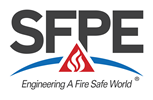Abstract
The condensed phase in FDS is presently modeled using a 1D heat conduction solver in-depth normal to the surface of the solid The solid is given a thickness and the boundary condition on the “backing” of the solid is taken either from another surface, or, if the backing is “exposed” and if the solid is one cell thick, the thermal conditions from the FDS gas phase domain may be applied The 1D approximation limits the accuracy of the surface boundary conditions when FDS is used for structural analysis It also prevents pre-heating of the surface for lateral and downward lame spread In this paper, we will discuss the implementation of a 3D heat transfer model in FDS Pyrolysis kinetics have been added to the 3D conduction solver Material properties use the same input formats as the 1D solver Residue formation (e.g., char) and burn away are possible in the 3D pyrolysis model An interior heat lux “wall model” for the 3D conduction solver allows for accurate estimation of the surface heat lux without prohibitively high grid resolution in the solid phase The model is fully parallel and integrated with FDS outputs for slice files, boundary files, and devices.
Presentation
Resources
| Paper | Presentation | ||
|---|---|---|---|
| HTML | HTML | ||
| Resources Archive File (.zip) | |||


